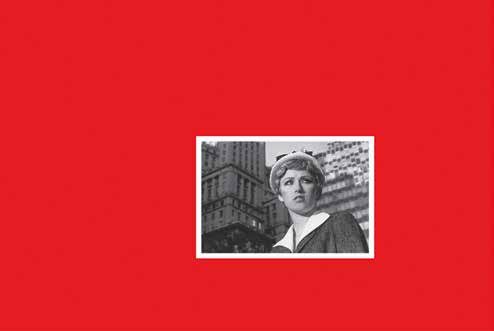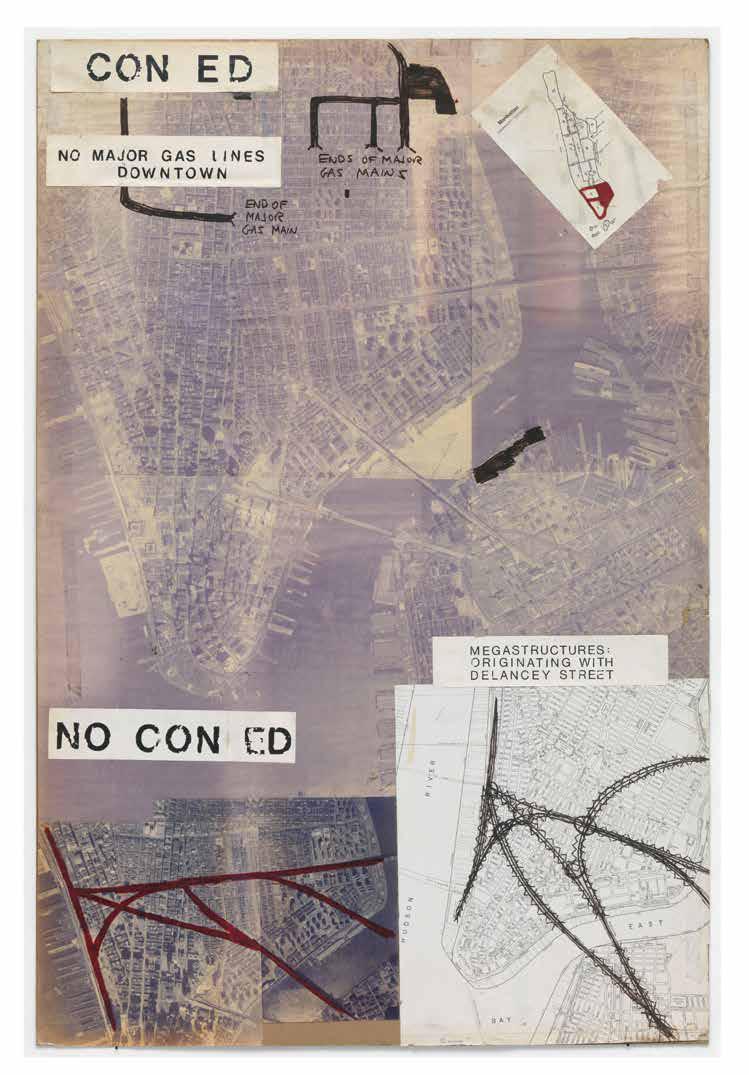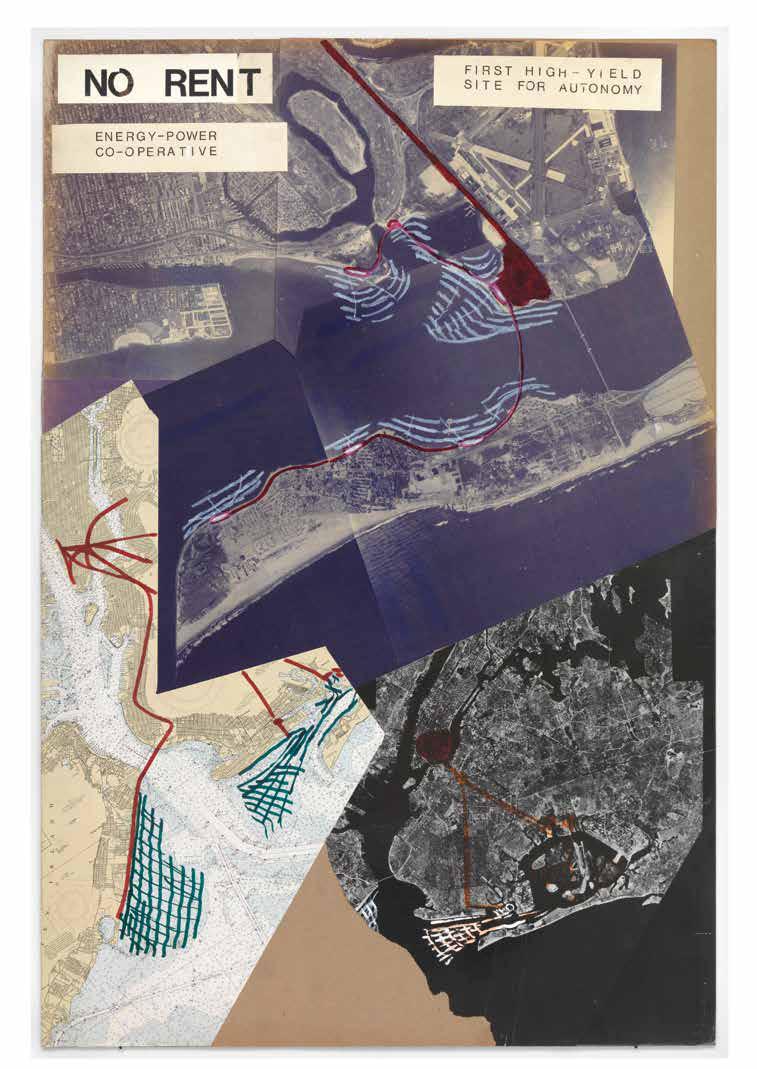Peter Fend
Names in the Nameless
A seemingly lonely girl below the cliffs of Manhattan skyscrapers is anxiously watching something hidden behind the film still frame… The probably most often reproduced photograph from the Untitled Film Stills series by Cindy Sherman is a classic of piece of feminist art today. It shows the cliché of female roles and the male gaze jammed in visual vectors of Hollywood blockbusters and European art films. While the author conceals the cause of the girl’s nervousness not to distract the viewer from the emancipatory message, Peter Fend finishes the story in his appropriation of the point of the story. He does not think the unattainable events on the other side of the street out to the end, but analyses the visible architectural framework surrounding the heroine. In an extended frame, he identifies former headquarters of the customs office and oil and shipping corporations that took part in the scheming with a major global impact during the First World War. According to Fend, not only did the scheming drive the US troops to marshlands in Flanders, but it also laid the foundations of the maritime oil empire controlled by the UK. What was sown has been reaped until today. The consequences include the transformation of the public financing system in the USA, a series of geopolitical conflicts in the world, and the catastrophic inability to break out of the dependence on fossil fuels in a time of global climate change.
The analysis is also an example of Fend’s long-term trajectories and interests. Since the late 1970s, he was a member of an artistic circle. It included, for example, Jenny Holzer and Richard Prince, and helped establish several associations, which were to become a platform for active participation of artists in social and political affairs. Fend took part in the Space Force project that eventually grew into a business venture. The business owners bought images of civilian satellites, evaluated them with the help of experts, and resold them to the media in the form of news spots. Sometimes they managed to come up with data challenging the official information. In the late 1980s, however, the venture transformed into the Ocean Earth Development Corporation after an alleged intervention of secret services and focused on environmental issues. Since then, it has been led by Fend and generated radical, as well as inventive and utopian visions that could be seen as answers to current devastation of the environment. Their common theme is the new administrative division of the planet that should not be based on ethnic, historical or planimetric contexts, but primarily monitor the borders of saltwater geomorphological units and their continental divides. This reorganization is related to the planned production of algae – the “new oil” replacing fossil fuels. These and many other ideas and the associated research and design included in the documentation and evocations then achieved a relative success at art shows and in galleries, their implementation, however, is far from happening.
Thus, the suspicious heroine of the film still can be also seen as a researcher in the field of forensic architecture, revealing a dark tale of power machinations featuring important politicians such as Winston Churchill and Franklin D. Roosevelt. The results are then just a piece in a broader interpretation of the background of the global events and environmental crisis, which should help us head towards a better fate. Although the findings of “Lawrence of Arabia in the world of art” do not always seem fully convincing and the suggested solutions do not deal with all issues, their radical character and energy is a perspective in itself.







#33 investigation
Archive
- #45 hypertension
- #44 empathy
- #43 collecting
- #42 food
- #41 postdigital photography
- #40 earthlings
- #39 delight, pain
- #38 death, when you think about it
- #37 uneven ground
- #36 new utopias
- #35 living with humans
- #34 archaeology of euphoria
- #33 investigation
- #32 Non-work
- #31 Body
- #30 Eye In The Sky
- #29 Contemplation
- #28 Cultura / Natura
- #27 Cars
- #26 Documentary Strategies
- #25 Popular Music
- #24 Seeing Is Believing
- #23 Artificial Worlds
- #22 Image and Text
- #21 On Photography
- #20 Public Art
- #19 Film
- #18 80'
- #17 Amateur Photography
- #16 Photography and Painting
- #15 Prague
- #14 Commerce
- #13 Family
- #12 Reconstruction
- #11 Performance
- #10 Eroticon
- #9 Architecture
- #8 Landscape
- #7 New Staged Photography
- #6 The Recycle Image
- #5 Borders Of Documentary
- #4 Intimacy
- #3 Transforming Of Symbol
- #2 Collective Authorship
- #1 Face
